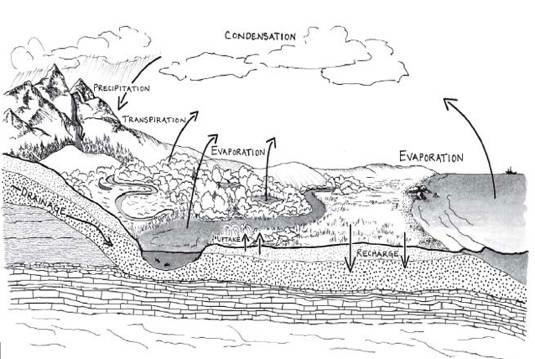 |
The Water Cycle |
Activity-at-a-GlanceStudents explore the water cycle and apply it to soil. They play an amusing card game that follows the fate of a water molecule through changes in phase and location. As an extension, they can also build an evaporation and condensation chamber and/or work with a model of one. |
MaterialsWater Cycle Cards, cut up in sheets |
OverviewIn this set of activities, after introducing the Water Cycle lightly with a card game - they will revisit it in greater depth later - students undertake a few experiments to enhance their understanding of the essential differences between ecosystems. In the months that follow, students will go into these differences in more depth, in particular differences of light and heat. Goal and ObjectivesThe goal of this activity is to introduce students to the Water Cycle System, its variables, and the ways variables can influence the cycle, and hence, the large ecosystems. Students will be able to identify the key steps in the Water Cycle (evaporation, condensation, precipitation), and discuss factors that influence their rate. |
Steps:Day 1 1. Prepare the students with a discussion. Have them consider the various influences on their study site and its ecosystem. Elicit the idea that influences arrive often in the water (liquid) or air (gas). 2. Step through the Water Cycle. You might first ask them where there is water in the map and then where there can be water movement. Step through the Water Cycle with your students using a projected Water Cycle map. 3. Play the Water Cycle Game and connect the ways water is stored to its availability to ecosystems. Distribute one set of cards of Water Cycle Cards to each team.
4. Students share their ideas for new cards in the GL forum. Test their understanding on the same map without annotation. Extensions:1. Build and experiment with a "solar still", an evaporation and condensation chamber. 2. Explore a model of an evaporation and condensation chamber. 3. Explore models of change of state in the Molecular Workbench. Search for Phase Change. |